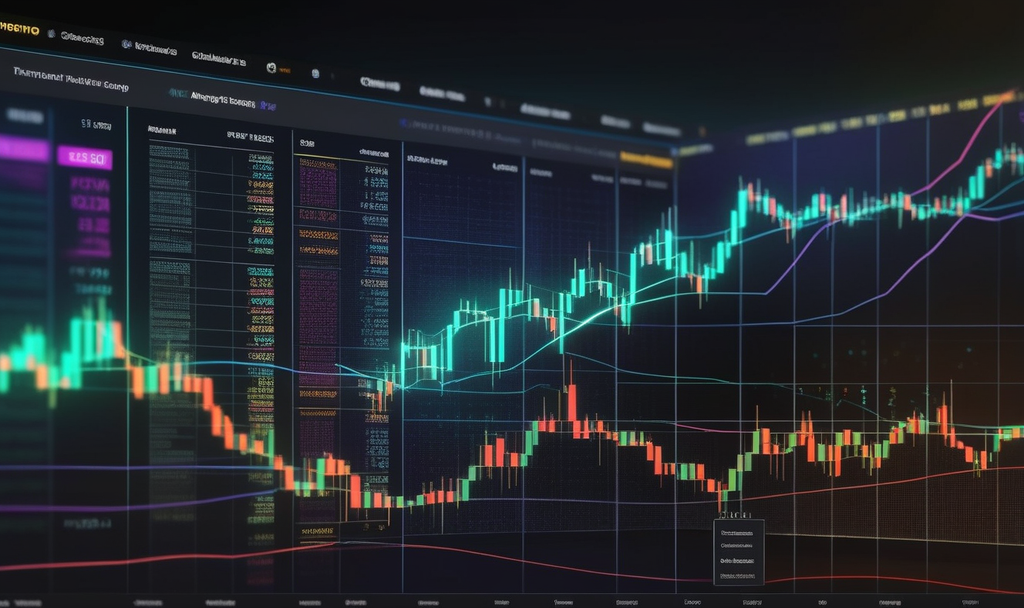Introduction
Cryptocurrencies have become a captivating realm for investors, traders, and enthusiasts alike. The volatility of crypto markets presents both opportunities and challenges, making accurate predictions of price movements a daunting task. In this blog post, we delve into the world of quantitative models designed to forecast crypto price changes. By exploring these models, we aim to shed light on the evolving landscape of crypto trading and the tools available for those looking to navigate it successfully.
Understanding Predictive Models
Predicting crypto price movements involves a fusion of data analysis, statistical modeling, and machine learning algorithms. Quantitative models play a pivotal role in this process, leveraging historical data, market indicators, and various other factors. These models help traders and investors make informed decisions in a market that can be as unpredictable as it is dynamic.
Technical Analysis in Crypto Prediction
One popular approach to predicting crypto prices is through technical analysis. This method involves studying historical price charts, identifying patterns, and using various indicators such as moving averages, RSI, and MACD. These tools assist traders in making predictions based on historical price movements and market trends. However, it’s important to note that past performance does not guarantee future results.
Machine Learning Algorithms
Advancements in machine learning have revolutionized the field of predictive modeling in crypto markets. Algorithms, such as decision trees, neural networks, and regression models, can analyze vast amounts of data to identify patterns and trends. Machine learning models adapt to changing market conditions, providing a dynamic and responsive approach to predicting crypto price movements.
Challenges in Crypto Price Prediction
Despite the promise of quantitative models, predicting crypto prices is not without its challenges. The crypto market’s susceptibility to external factors, regulatory changes, and sudden market sentiment shifts can render even the most sophisticated models ineffective. It’s crucial for traders and investors to acknowledge the inherent uncertainties and limitations of predictive modeling in the crypto space.
Risk Management and Predictive Models
Effective risk management is an integral part of successful crypto trading, especially when utilizing predictive models. While these models can provide valuable insights, they should not be the sole basis for decision-making. Traders must consider various risk factors and employ strategies such as stop-loss orders to mitigate potential losses.
The Role of Sentiment Analysis
In recent years, sentiment analysis has gained prominence in predicting crypto price movements. This approach involves analyzing social media, news articles, and other online sources to gauge market sentiment. By understanding the collective mood of market participants, traders can anticipate potential price shifts. However, it’s essential to interpret sentiment analysis with caution, as it can be influenced by both genuine information and market manipulation.
Balancing Quantitative and Qualitative Factors
While quantitative models provide valuable quantitative insights, it’s crucial to consider qualitative factors in the crypto market. Regulatory developments, technological advancements, and industry partnerships can significantly impact prices. Striking a balance between quantitative analysis and qualitative understanding can enhance the accuracy of price predictions.
The Human Element in Crypto Trading
Quantitative models, despite their sophistication, cannot replace human intuition and experience in crypto trading. Traders must use their judgment to interpret model outputs, adapt to evolving market conditions, and make decisions that align with their risk tolerance and investment goals. The human element remains a critical factor in the success of crypto trading strategies.
If you have any question about this article, please contact us …
You can easily create a free cryptocurrency wallet with binance …
Conclusion
In the dynamic world of cryptocurrencies, predicting price movements is a multifaceted challenge that requires a combination of quantitative analysis, technological tools, and human judgment. While quantitative models offer valuable insights, traders must approach them with a nuanced understanding of the market’s complexities. By leveraging the strengths of predictive models and incorporating qualitative considerations, investors can navigate the crypto landscape with greater confidence. Remember, the crypto market is ever-evolving, and success lies in adapting strategies to the changing tides of this intriguing financial ecosystem.

